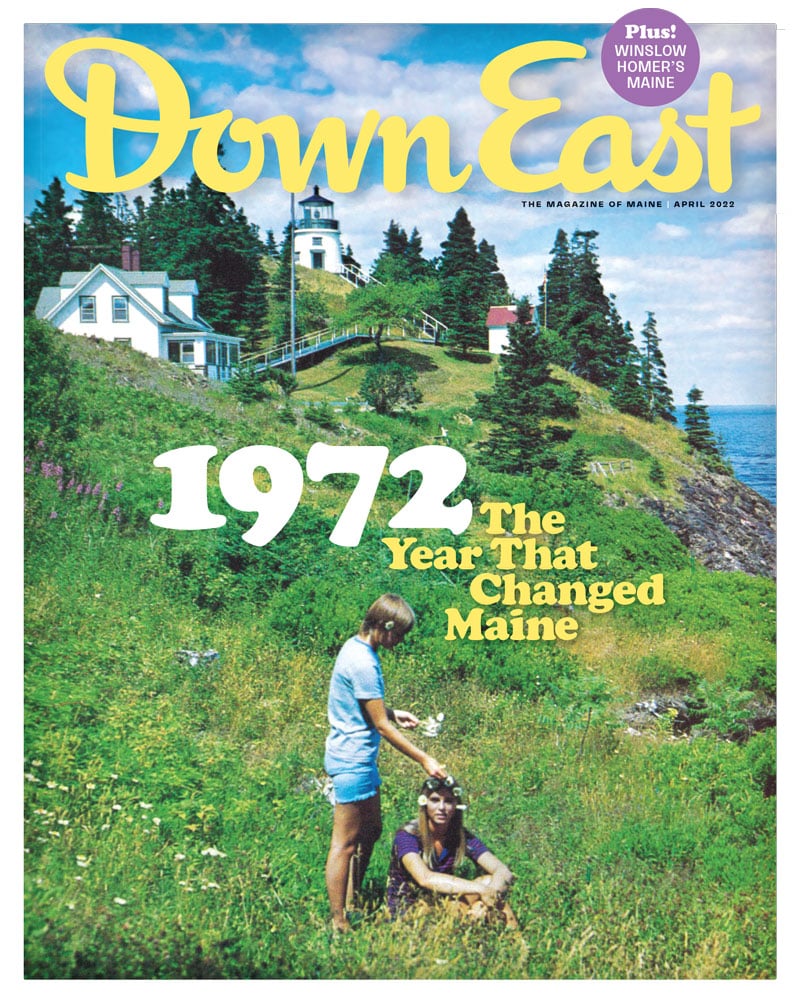By Philip Conkling
Photograph by Peter Ralston
From our April 2022 issue
Imagine being part of a ship’s crew in 1605 that crossed the stormy North Atlantic, on an expedition to chart the New World for King James of England. After grueling weeks at sea, the ship Archangel, captained by George Waymouth, made landfall at Monhegan Island. But Waymouth, along with the ship’s surgeon and naturalist, James Rosier, recognized that Monhegan was an exposed anchorage, so they sailed cautiously toward the mainland, taking soundings as they went. The crew dropped anchor off 450-acre Allen Island. We know all this because Rosier left a detailed account of their voyage, including comprehensive observations of the flora and fauna and original residents of pre-colonial Maine.
Rosier’s account — “A True Relation,” his title described it — of their two-month exploration of the midcoast entranced the late Betsy Wyeth, the wife of artist Andrew Wyeth, after she bought Allen Island in 1980. Betsy had heard that the island hosted a grove of old-growth yellow birches, perhaps dating to Waymouth’s time, and since I had found and described these trees for Maine’s Critical Areas Program, she contacted me and asked me to take her to them.
During most of the next 40 years, Betsy created startlingly beautiful landscapes, not just on Allen Island but also on adjacent Benner Island, across the narrow gut that Waymouth christened Pentecost Harbor, for the holiday on which his men observed the New World’s first Anglican service. When Betsy bought Allen, she found an island that had gone feral. By the early 20th century, Allen and Benner’s once-thriving community of fishing families had migrated ashore. The pastures that had once supported large flocks of sheep were a tangle of stunted white birch, gnarled spruce, and alder. Betsy reclaimed old pastures and opened new ones, reintroduced sheep, rebuilt the wharves, and built bunkhouses, libraries, and barns on both sides of the harbor. She built a wharf for the lobstermen who fished around the islands’ shores. Her vision was to create a diverse working community that would honor the islands’ (and region’s) past, one that would welcome and create meaningful experiences for generations of scholars, artists, fishermen, and students.
Allen and Benner are also where Andrew Wyeth painted many of his most compelling, most haunted, late works. Betsy, like the Homeric enchantress Circe, created a magical new world, and Andrew followed and fell into the spell she cast there. It was just as she’d done with him at Southern Island, in Tenants Harbor, where he painted in the keeper’s house she’d renovated, and at her family’s Broad Cove Farm, in Cushing, where the couple met when Betsy was 17 and Andrew a sensational young artist of 21.
Several months ago, Colby College president David Greene and Jamie Wyeth, Betsy’s son, announced that Colby would take over ownership and stewardship of the two islands. They are to become an environmental-science research station and a place where students from all walks of life can find inspiration for their studies. The islands’ natural history, human history, and aesthetic beauty are richly interwoven, creating a stunning microcosm that will be an inspirational natural library for students to explore, the pieces of creation spread out before them, around them, and over them. Worlds within worlds are revealed in places like these, small parts of Maine that have always captured the imaginations of its mariners and artists, inhabitants and visitors — and will do so, hopefully, as long as island earth continues to turn.




